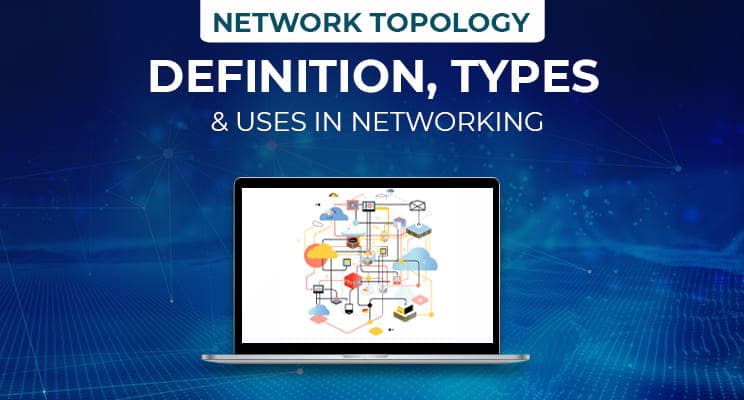Understanding Switching in Networking and Topology for Cyber Security Beginners
Understanding Switching in Networking and Topology for Cyber Security Beginners
In today's fast-changing world of cyber security, it is important to gain a grasp of the fundamental concepts of networking. One of the key subjects is switching, combined with networking and topology, which collectively shape the basis of secure and expandable IT infrastructure. Whether you're studying cyber security courses, taking cloud certification courses, or beginning your way through cyber security training, learning these networking fundamentals will go a long way to advancing your career. This UniNets guide will take you through switching, topologies, and associated technologies such as Dynamic Trunking Protocol, and how these are contemporary security paradigms.

What Is Switching in Networking?
Switching refers to the process of routing data packets between network devices. In contrast to hubs that broadcast data to all devices, switches utilize MAC addresses to forward data intelligently only to the destination. This improves efficiency as well as security within a network.
Three types of switching exist:
Circuit Switching
Packet Switching
Message Switching
In cyber security training, the majority of classes are centered on packet switching, particularly Ethernet switching, that prevails on LANs (Local Area Networks). Knowing switching will enable you to secure internal traffic, prioritize bandwidth, and partition your network with VLANs (Virtual Local Area Networks).
Why Switching Is Important for Cyber Security
Networking and TopologySwitching is critical to network segmentation, which is the backbone of network security. By correctly configuring switches and using VLANs, you can:
Keep sensitive traffic separate
Block lateral movement by attackers
Control and monitor access between departments
Sophisticated switches have features such as:
Port security
Access Control Lists (ACLs)
802.1X authentication
These are often discussed in cyber security training programs run by institutions such as UniNets, where students learn hands-on about enterprise-class switching equipment.
Networking and Topology: The Backbone of Cyber Security
What is Network Topology?
Network topology is a description of how various network devices (such as switches, routers, and computers) are physically or logically connected. Typical topologies are:
Bus Topology
Ring Topology
Star Topology
Mesh Topology
Hybrid TopologyTopology in networking must be understood because it impacts:
Network performance
Fault tolerance
Scalability
Security structure
For instance, a mesh topology provides superior redundancy and is widely utilized within mission-critical environments such as data centers. Conversely, a star topology is simpler to manage and secure for small offices.
How Topology and Switching Improve Cyber SecuritySegmentation: Topologies can define how simply you can segment networks with switches.
Redundancy and Uptime: Mesh topologies aided by smart switching provide uninterrupted service even during hardware failure.
Traffic Control: With intelligent topology and switching, malicious traffic can be controlled and isolated in a matter of seconds.
Security Zoning: Various zones (e.g., DMZ, internal network, guest network) are more easily implemented through intelligent topology planning.
All these are prominently highlighted in cyber security training modules at UniNets where the actual simulation demonstrates how networks can be secured from internal and external attacks through topology and switching methodologies.
What Is Dynamic Trunking Protocol (DTP)?
Dynamic Trunking Protocol (DTP) is a Cisco proprietary protocol for automatically negotiating trunk links between switches. Trunking enables the transport of many VLANs over a single link, facilitating improved network structure and flexibility.
Cyber security implications of DTP are:
Unauthorized VLAN access: Malicious users can possibly negotiate trunks and access multiple VLANs if DTP is not properly configured.
Security best practices: Turn off DTP on access ports and implement static trunking where appropriate.
Most cyber security training programs and cloud certification training programs stress secure switch configuration, such as turning off unused ports and configuring trunk links securely to avoid VLAN hopping attacks.
Integrating Switching and Topology in Cloud ComputingWith companies transitioning to cloud platforms, knowledge of networking is still essential. Cloud computing courses include switching and topology basics these days to equip learners with knowledge regarding how cloud infrastructure is constructed and secured.
Major Areas Where Switching & Topology Concepts Are Used in Cloud Environments:Virtual Networking: Like physical switches but carried out in software.
Security Groups & Subnetting: Logical division of network areas in cloud platforms.
Load Balancers & Gateways: Assist in efficiently and securely managing traffic.
Integrated cloud certification training programs, like AWS, Azure, and Google Cloud, now feature networking as a fundamental element. UniNets students are introduced to both physical and virtual networking environments.
Why UniNets for Cyber Security and Networking Training?
UniNets provides industry-specific cyber security training programs and cloud computing training programs that are meant for practical use. Here's what makes UniNets special:
Hands-on labs with physical and virtual switches
Real-world application scenarios touching on VLANs, DTP, and network segmentation
Incorporation of topology into networking in both physical and cloud setups
Global recognized cloud certification course preparation
New modules touching on dynamic threats and how to secure enterprise networks
Whether new to the field or seeking to advance your knowledge, UniNets' cyber security training curriculum guarantees you are well-equipped with the hands-on skills to design, analyze, and protect today's networks.
Final Thoughts
Switching, network topology, and protocols such as DTP are not merely technical terms — they are valuable tools in the cybersecurity expert's arsenal. Whether you're taking on a role as an ethical hacker, a network administrator, or cloud security specialist, it's vital you have command over these topics. By taking cyber security courses and cloud certification courses at UniNets, you acquire knowledge and confidence to secure, optimize, and grow networks.
